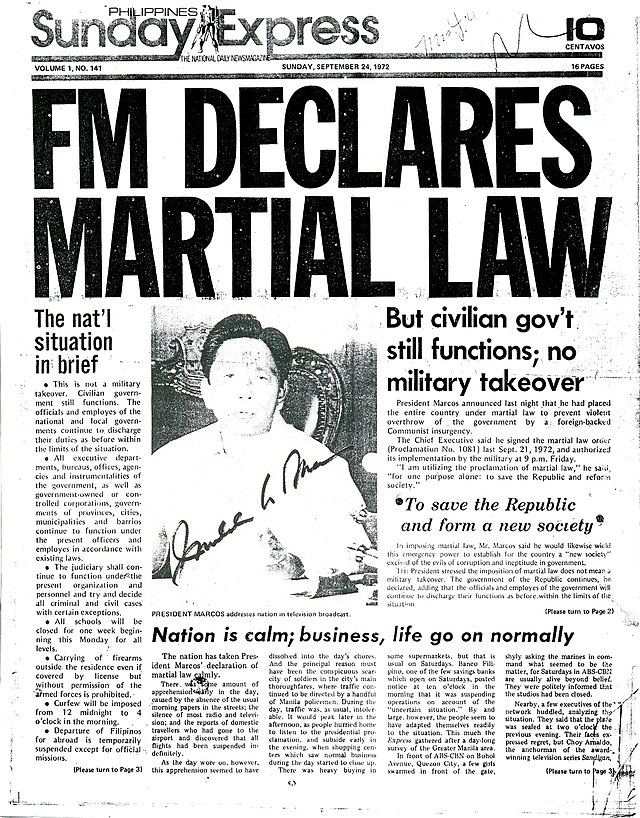The Facts About News Articles Uncovered
3 Simple Techniques For News Articles
Table of ContentsGet This Report on News ArticlesNews Articles Fundamentals ExplainedExcitement About News ArticlesSome Of News ArticlesNews Articles Things To Know Before You Buy
Great knowledge of various topics gives pupils an one-upmanship over their peers. Despite the fact that digital and social media sites are conveniently easily accessible, we should not fail to remember just how vital it is to check out the papers. Moms and dads need to attempt and instill the practice of reviewing a newspaper as an everyday regimen to continue the tradition of the adored print medium.Information tales likewise include at the very least one of the adhering to essential attributes relative to the desired audience: proximity, prestige, timeliness, human interest, strangeness, or consequence. The related term journalese is often utilized, typically pejoratively, to describe news-style writing. An additional is headlinese. Papers usually abide by an expository writing design.
Within these limitations, news tales likewise aim to be comprehensive. Amongst the larger and more highly regarded newspapers, fairness and equilibrium is a major element in presenting details.
Newspapers with a global audience, for instance, tend to make use of a much more official style of creating. News Articles.; typical design guides include the and the United States News Design Book.
The Definitive Guide to News Articles
As a guideline, journalists will not use a long word when a brief one will certainly do. Information authors attempt to stay clear of utilizing the exact same word a lot more than as soon as in a paragraph (occasionally called an "resemble" or "word mirror").
Nonetheless, headlines sometimes omit the subject (e.g., "Jumps From Watercraft, Catches in Wheel") or verb (e.g., "Pet cat female lucky"). A subhead (likewise subhed, sub-headline, subheading, subtitle, deck or dek) can be either a secondary title under the primary heading, or the heading of a subsection of the article. It is a heading that precedes the main text, or a group of paragraphs of the main text.

of a post topic, informant, or interviewee), it is described as a pulled quotation or pull quote. Additional signboards of any one of these kinds may appear later on in the write-up (particularly on succeeding web pages) to lure additional analysis. Journalistic websites occasionally use animation techniques to swap one billboard for one more (e.g.
The 8-Second Trick For News Articles
Such signboards are likewise made use of as guidelines to the short article in various other areas of the publication or website, or as ads for the item in other magazine or sites. News release of the Swiss government. Typical framework with title, lead paragraph (recap in strong), other paragraphs (details) and contact info.

Example of a hard-lead paragraph NASA is recommending an additional area project. The spending plan requests roughly $10 billion for the project.
The NASA announcement came as the company asked for $10 billion of appropriations for the job. An "off-lead" is the second crucial front web page information of the day. The off-lead shows up either in the top left edge, or straight listed below the lead on the right. To "bury the lead" is to start the short article with history information or information of secondary value to the readers, requiring them to find out more deeply right into an article than they must have to in order to find the essential points.
Fascination About News Articles
Typical usage is that a person or two sentences each develop their own paragraph. Journalists typically define the company or framework of an information you can check here tale as an upside down pyramid. The important and most interesting elements of a story are placed at the start, with sustaining info complying with in order of lessening relevance.
It permits individuals to explore a topic to just the deepness that their interest takes them, and without the imposition of details or subtleties that they can take into consideration unnecessary, yet still making that details readily available to a lot more interested viewers. The inverted pyramid structure also enables short articles to be trimmed to any arbitrary size during layout, to suit the area offered.
Some writers begin their tales with the "1-2-3 lead", yet there are lots of sort of lead offered. This format inevitably begins with a "Five Ws" opening up paragraph (as explained above), followed by an indirect quote that offers to support a significant aspect of the first paragraph, and after that a direct quote to sustain the indirect quote. [] A kicker can describe several points: The last tale in the news program; a "pleased" tale to finish the show.
Longer write-ups, such as magazine cover write-ups and the pieces that lead the within sections of a newspaper, are referred to as. Function tales differ from straight information in several methods. important source Foremost is the lack of a straight-news lead, most of the moment. As opposed to using the essence of a story in advance, feature authors might attempt to draw readers in.
News Articles - Truths
The journalist usually details interactions with interview subjects, making the piece much more individual. A function's initial paragraphs often relate a fascinating moment or event, as in an "anecdotal lead". From the particulars of an individual or episode, its sight quickly broadens to abstract principles regarding the story's subject. The section that signals what a function is around is called the or signboard.

The Editor's Tool kit: A Recommendation Guide for Beginners and Professionals (2001) Allan M. Siegal and William G. Connolly. The New York Times Handbook of Style and Usage: The Authorities Style Overview Made Use Of by the Writers and Editors of the World's Most Authoritative Paper (2002) M. L. Stein, Susan Paterno, and R.